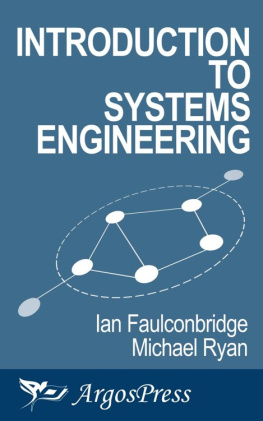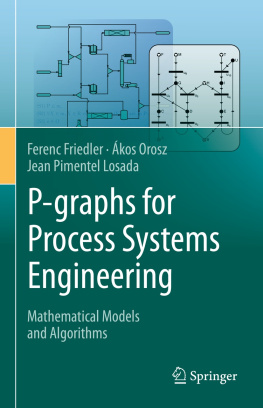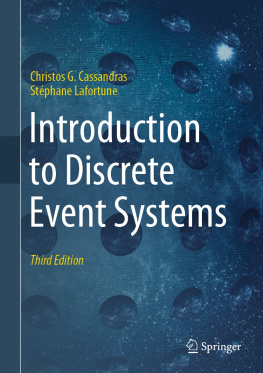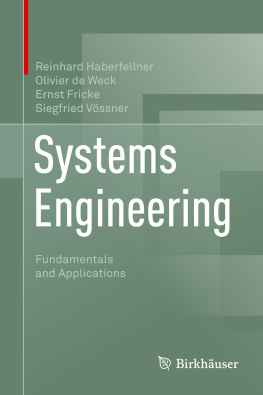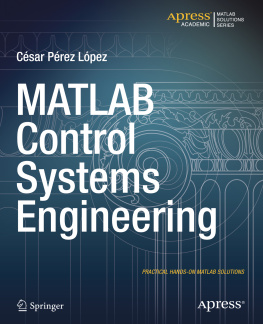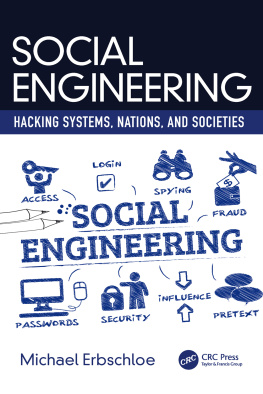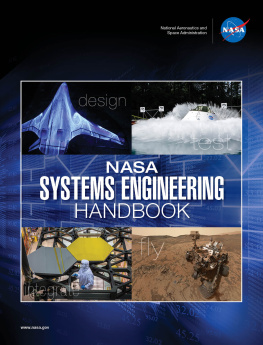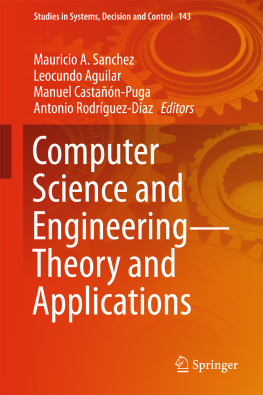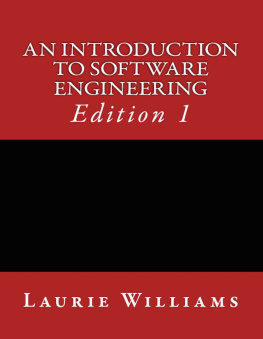Ian Faulconbridge - Introduction to Systems Engineering
Here you can read online Ian Faulconbridge - Introduction to Systems Engineering full text of the book (entire story) in english for free. Download pdf and epub, get meaning, cover and reviews about this ebook. year: 2015, publisher: Argos Press Pty Ltd, genre: Computer. Description of the work, (preface) as well as reviews are available. Best literature library LitArk.com created for fans of good reading and offers a wide selection of genres:
Romance novel
Science fiction
Adventure
Detective
Science
History
Home and family
Prose
Art
Politics
Computer
Non-fiction
Religion
Business
Children
Humor
Choose a favorite category and find really read worthwhile books. Enjoy immersion in the world of imagination, feel the emotions of the characters or learn something new for yourself, make an fascinating discovery.
- Book:Introduction to Systems Engineering
- Author:
- Publisher:Argos Press Pty Ltd
- Genre:
- Year:2015
- Rating:4 / 5
- Favourites:Add to favourites
- Your mark:
- 80
- 1
- 2
- 3
- 4
- 5
Introduction to Systems Engineering: summary, description and annotation
We offer to read an annotation, description, summary or preface (depends on what the author of the book "Introduction to Systems Engineering" wrote himself). If you haven't found the necessary information about the book — write in the comments, we will try to find it.
Introduction to Systems Engineering — read online for free the complete book (whole text) full work
Below is the text of the book, divided by pages. System saving the place of the last page read, allows you to conveniently read the book "Introduction to Systems Engineering" online for free, without having to search again every time where you left off. Put a bookmark, and you can go to the page where you finished reading at any time.
Font size:
Interval:
Bookmark:

INTRODUCTION TO
SYSTEMS ENGINEERING
R. Ian Faulconbridge
Michael J. Ryan
2015 R. Ian Faulconbridge andMichael J. Ryan
ISBN: 9781921138089
Cover design by Tim Ryan
Published by Argos Press,Canberra, Australia
www.argospress.com
PREFACE
This e-bookprovides a basic coverage of the discipline known as systems engineering.The e-book supports the Massive Open Online Course (MOOC) that the authorsdeliver regularly through the Coursera platform and is an overview of our more-comprehensivephysical text Systems EngineeringPractice. Here, we offer a framework encapsulating the entire systemsengineering discipline, clearly showing where the multitude of associatedactivities fits within the overall effort, providing an ideal vehicle forunderstanding the complex discipline.
Chapter 1 introduces systems engineeringand related issues and Chapter 2 provides an overview ofrequirements-engineering and its application to systems development. Chapters 3and 4 examine in more detail the issues associated with Conceptual Design andPreliminary Design. Emphasis is given to these early activities, as they havethe greatest impact on the system development. Chapters 5, 6 and 7 deal withrespectively Detailed Design and Development, Construction and/or Production,and Operational Use and Support. Chapter 8 deals with the broad topic ofsystems engineering management and details some of the associated activities.
IanFaulconbridge
MikeRyan
Canberra,2015
CONTENTS
SYSTEMS ANDSYSTEMS ENGINEERING
Systems engineering provides theframework within which complex systems can be adequately defined, analysed,specified, manufactured, operated, and supported. The focus of systemsengineering is on the system as a whole, and the maintenance of a stronginterdisciplinary approach. Project management, quality assurance, integratedlogistics support, and a wide variety of engineering disciplines are but a fewof the many disciplines that are part of a coordinated systems engineeringeffort.
Before we begin to address thediscipline associated with engineering a system, we need to consider what ismeant by a system. There are physical systems such a solar systems, riversystems, railway systems, satellite systems, communication systems, informationsystems, pulley systems, nervous systems, just to name a few. There arephilosophical systems, social systems, religious systems, gambling systems,banking systems, systems of government, and many more. Before we continue,therefore, we should briefly consider what we mean by a system in thecontext of systems engineering.
ISO/IEC 15288 defines a system asa combination of interacting elements organized to achieve one or morestated purposes .As illustrated in Figure 1-1, the very act of identifying the system thatwe are interested in, implies an external system boundary and a systemof interest (SOI).

Figure 1-1. An SOI: its elements, interconnections, and boundary.
The purpose of the system is called its missioninthe broadest sense, the mission of the system is to provide a solution to a businessproblem. When we refer to a system as comprising system elements thatare interconnected in order to achieve the systems mission, weimply that all three of those principal aspects result from conscious choice.That is, we are referring to systems that have been deliberately designed,or engineeredhence our interest in systems engineering. Further,a system that has been engineered to perform a specified mission must be ableto perform that mission with relative autonomythat is, it must be manageriallyand operationally independent (and may well have been procured independently).
There are numerous ways to classifysystemshere we identify the four main types in order to be clear as to whichtype of system we refer to in this book:
Closed/open systems. An open system interacts with itsoperating environmentit accepts inputs from that environment across itsboundary and returns outputs across the same boundary to the externalenvironment. A closed system is isolated from its external environment. We areonly interested in useful systems, which are therefore open.
Natural/human-made/human-modified systems. Natural systemscontain natural elements that result from natural processes; human-made systemscome into existence through the efforts of humans and may contain human-madeelements or natural elements adapted to human-designed purposes. Naturalsystems that have been modified for human purposes are called human-modifiedsystems. The systems engineering for natural systems is certainly not conductedby humans, so we are only interested in human-made/modified systems.
Physical/conceptual systems. Physical systems exist in aphysical form; conceptual systems do not have a physical form. We focus here onphysical systems.
Precedented/unprecedented systems. In a precedented system,similar such systems (or, at least, the majority of system elements) have beenproduced before. An unprecedented system is one that has not been previouslyproduced. Systems that comprise mostly unprecedented elements are the result ofresearch and development effort. Here we focus on systems that comprise largelyprecedented elementsthat is, those to which engineering is appropriate.
A wide variety of combinations ofthe above (and other) characteristics can lead to a large number of types ofsystems, each of which has markedly difficult properties. In systemsengineering we are interested in open, physical systems that are human-made/modifiedfrom largely precedented elements.
Now, since we are interested in engineeringphysical systems that are open, our SOI must accommodate externalinterfaces(inputs/outputs) across the system boundary to external elements thatexist in an external operating environment (or perhaps in a relatedsystem)see Figure 1-2.

Figure 1-2. An SOI: its elements, interconnections, boundary, and interfaces to externalelements in the operating environment.
In a physical sense, the term systemis sometimes considered to be synonymous with productthat is, we saythat the project is delivering a system, or is delivering a product. A systemis normally, however, considered to comprise a number of products such asoperational products (end products) and enabling products (such as test,training, and disposal products).
Before we go any further, however, wemust acknowledge that the systems we are interested in are much more than anaggregation of hardware or software products and must also be described interms of all of its constituent elements, including: the major hardware andsoftware products, the organisation within which it will be fielded, thepersonnel who will interact with it in many ways, the collective trainingsystems required, as well as the facilities, data, and support (includingsupplies) required to keep the system in service, and the operating proceduresand organisational policies. The system is fully defined by the combination ofthese resources operating in its operational environment in order to achievesome purpose. In that sense then, we could define a system as delivering an
Font size:
Interval:
Bookmark:
Similar books «Introduction to Systems Engineering»
Look at similar books to Introduction to Systems Engineering. We have selected literature similar in name and meaning in the hope of providing readers with more options to find new, interesting, not yet read works.
Discussion, reviews of the book Introduction to Systems Engineering and just readers' own opinions. Leave your comments, write what you think about the work, its meaning or the main characters. Specify what exactly you liked and what you didn't like, and why you think so.

